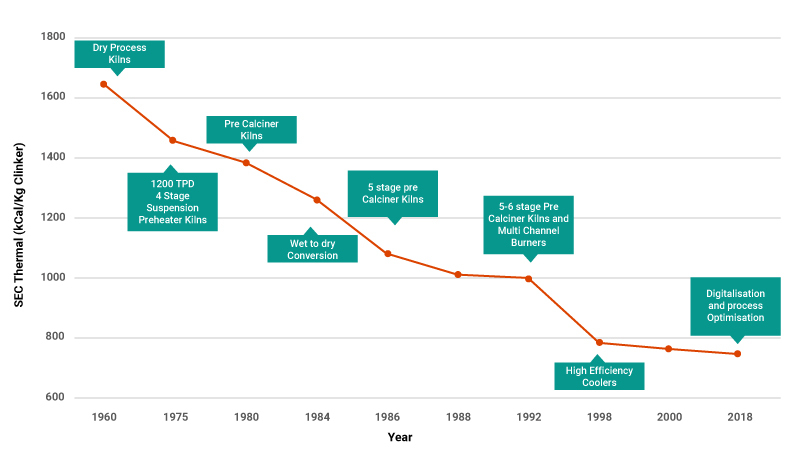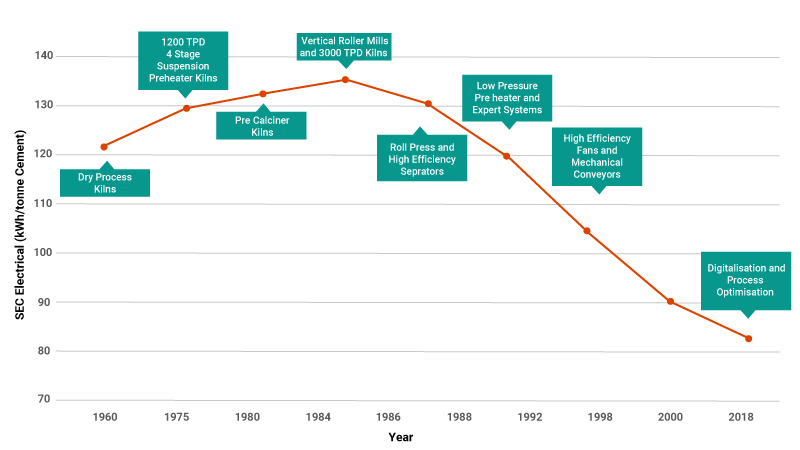The Indian Cement Industry has consistently demonstrated high calibre manufacturing through adoption of the state of art technologies and best in class processes. Over 40 per cent of the current installed capacity has been implemented over the last decade incorporating automated processes and latest plant machinery. An environmentally conscious business leadership has placed India amongst the most energy and resource efficient manufacturers of cement in the world.
The energy efficiency within the Cement Industry is measured as a combination of two factors – thermal specific energy consumption and electrical specific energy consumption. Currently about 99 per cent of the Indian cement companies has transitioned to a water efficient dry process technology thereby conserving a significant fraction of energy in drying the raw mix. Implementation of process optimisations; installation of the latest generation of clinker coolers; grinding systems; multichannel burners; and digitalisation have enabled the Indian Cement Industry to perform at par with the best in the world. Figure highlights how the Indian Cement Industry has been able to bring down thermal specific energy consumption over years through key technological measures.

Additionally, the implementation of latest technologies like Vertical Roller Mills (VRMs) or High Pressure Grinding Rolls (HPGRs); variable frequency drives; and high efficiency separators and conveyors have helped lower the overall electrical specific energy consumption in cement manufacturing. Interestingly, some of the thermal energy efficiency measures adopted in clinker production may inversely impact the electrical energy consumption. For example, the installation of modern coolers causes a reduction in thermal energy use but increases the consumption of electrical energy. The benefit in thermal energy efficiency in this scenario however, outweighs the impact on the electrical energy consumption. Additionally, the demand for higher product fineness (for strength) and secondary abatement technologies (for lower emission norms) could further increase the specific electrical energy consumption of a cement plant. These aspects remit the need to assess both the thermal and electrical specific energy consumption together to arrive at the overall energy efficiency of a cement plant. Figure highlights the decline through the years in the Indian Cement Industry’s electrical specific energy consumption owing to adoption of key technological measures.

Additionally, adoption of technologies like the Waste Heat Recovery Systems (WHRS), energy efficient transformers, light pipes, intelligent Motor Control Centre (MCC), Light Emitting Plasmas (LEPs), induction lights, static synchronous compensator, static reactive power compensator and process automation offer an increased potential to improve the specific energy consumption in cement manufacturing. The Cement Industry has also been researching on the techno-economic feasibility of over the horizon technologies.
Meticulous efforts by the Indian Cement Industry have enabled it to overachieve its sectoral energy savings target set under the flagship Perform Achieve and Trade (PAT) initiative (both cycle I & II) of the Government of India. The leading energy efficient Cement plants in India operate at the optimal thermodynamic limit of the Cement manufacturing process and are setting performance benchmarks for the world.